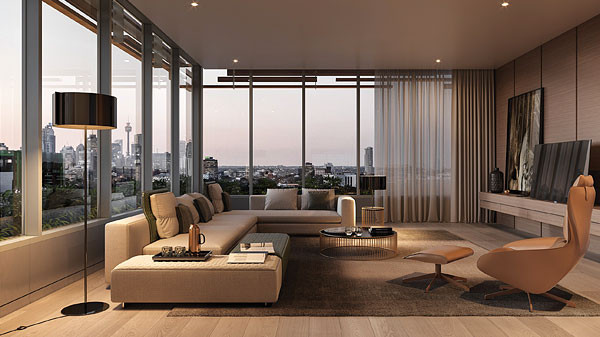Peered at on an on-screen map, Australia seems somewhat set apart from the rest of the world. Indeed, in many ways – geographically, culturally, zoologically – it most certainly is. It is its singular nature, however, that most appeals to overworked Hongkongers, many of whom are simply entranced by its vast wide-open spaces and low population density.

Of all the Oceanic cities and resorts, it is Sydney that seems to be the biggest draw for second-home-hankering Hongkongers and, thankfully, now seems to be the perfect time to invest. According to industry statistics, real estate prices in the city – Australia’s most populous – fell by 1.4 percent in November last year. Tellingly, this was twice the size of the national decline in house prices and took the total fall in the value of the city’s average residence to 8.1 percent for the year. While this was a cause of continuing concern for existing homeowners, it was music to the ears of would-be buyers.
And top of the list for any suitably wealthy would-be buyer would be Mastery by Crown Group, a stylish new development in one of Sydney’s most upmarket locales – Waterloo, a recently gentrified suburb some three kilometres to the south of the city’s central business district.

Set on O’Dea Avenue, one of the suburb’s most desirable addresses, the site was developed by Crown Group, an award-winning local architecture / real estate business, and consists of five linked buildings, together housing 384 luxury apartments. Given its upmarket positioning, it should be no surprise that this bespoke complex also boasts a rooftop pool, several gyms, a number of restaurants and a host of boutiques.

More surprising, however, is the breadth of the vision that guided the site’s development from the outset. Indeed, it took three unique talents – Iwan Sunito (Crown Group’s CEO) and two award-winning Japanese architects, Kengo Kuma and Koichi Takada – to bring the project to fruition. Collectively, they refined the building’s unique “stacked forest” conceit, creating what resembles a 19-storey vertical garden, with plants and foliage sprouting across all the exterior surfaces.
Explaining the thinking, Kuma says: “Our intention was to create a warm and natural atmosphere for the whole community. In order to achieve this, the upper volume of the tower segues into the lower part of the stepped terraces, creating an intimacy between the building and passers-by. This is further enhanced by the wood-clad eaves that run across the façade. Ultimately, the ubiquity of this vegetation has created what we call a vertical urban forest.”

With ‘green luxury’ very much the driving principle of this whole Sydney development, it is a concept equally apparent in both the exterior of the buildings and the interiors of each individual apartment. This sees each residential unit fitted with wall-to- wall glass windows, which run from the living room to the bedrooms, ensuring that a generous measure of natural light permeates every nook.

As to the rooms themselves, these are large and airy throughout, while also benefiting from deliberately understated and minimalistic wood finishing, inevitably bringing to mind – surely intentionally – the Japanese heritage of the lead architects. Even within the confines of such tasteful, subtle luxury, however, a sense of being close to nature persists, largely thanks to the fetching array of greenery that blooms in every recess. It’s a feeling that only intensifies should you step out onto one of the extensive balconies, all of which are judiciously festooned with a living carpet of lush foliage and multihued floral arrangements.

Giving his own take on the concerns and priorities that shaped the project, Takada says: “We were all deeply motivated by many aspects of the natural world. By creating genuinely eco-friendly apartments, we wanted to positively regenerate Waterloo – once home to an array of disused warehouses – and transform it into a truly organic and health-enhancing green neighbourhood, with a resort-style space for refined residents at its very core.”

Nowhere are these elements more apparent than in the plant-strewn water feature that dominates the central courtyard from which the complex radiates out. With a clutch of close-packed bamboo trees ringing the stylised waterway, it is surely a knowing nod to the exquisite groves of Arashiyama, one of the most popular tourist attraction in Japan’s 2,500km-distant Kyoto prefecture – a little bit of Asia tucked away in Sydney, Australia and a home away from home for any high-net worth Hongkonger.
Text: Suchetana Mukhopadhyay
Images: Crown Group



